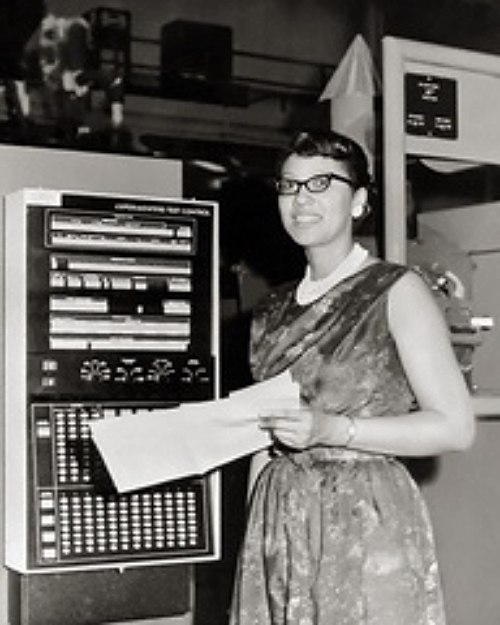Achievements
Katherine was one of the 3 students picked to be the first black students to be offered spots at West Virginia University. She has also played a part in creating the first American Human Spaceship. She also received the honor of being the first woman in the Flight Research Division who had received credit as an author of a research report.Johnson began working for NACA in 1953. Her work in the agency was a day-to-day progression. She started as one of the women who worked on problems assigned from the engineers in what was then the Guidance and Control Branch. As Johnson worked on the problems, she would ask questions. She didn’t want to just do the work -- she wanted to know the “hows” and the “whys” and then the “why nots.” None of the other women had ever asked questions before, but by asking questions, Johnson began to stand out. She was told that women didn’t participate in the briefings or attend meetings; she asked if there were a law against it. The answer, of course, was no, and so Johnson began to attend briefings. NACA was just beginning its work on space. Space itself may be perceived as a series of plane surfaces, and as Johnson became known for her training in geometry, she began to work with the team more and more. Eventually, she became known as a leader, and the men increasingly relied on her. She remembers quite clearly her experience at the time. “The women did what they were told to do,” she explained. “They didn’t ask questions or take the task any further. I asked questions; I wanted to know why. They got used to me asking questions and being the only woman there.” It was this inquisitive nature that made her a valuable resource to the team and the only woman at the time to ever be pulled from the computing pool to work on other programs. Then in 1962, President John F. Kennedy charged the country to send a man to the moon. Johnson became part of the team, and she began to work on calculating the trajectory for America’s first space trip with Alan Shepherd’s 1961 mission, an early step toward a moon landing. She went on to do the calculations for the first actual moon landing in 1969.

